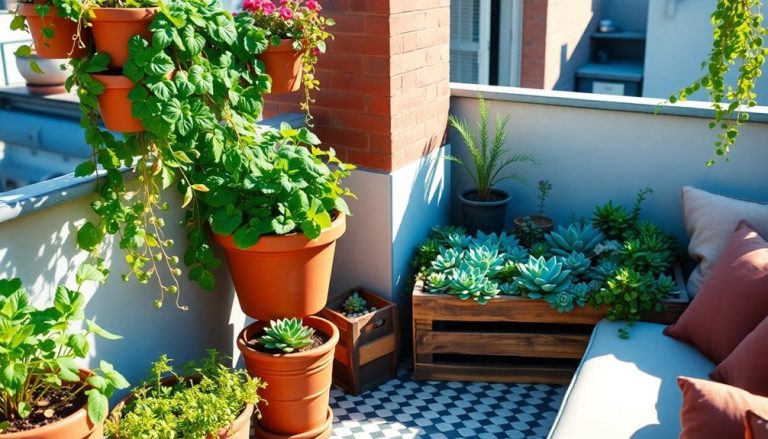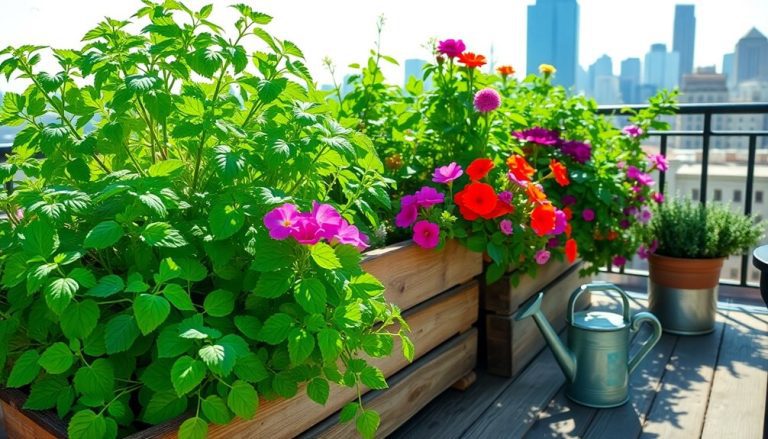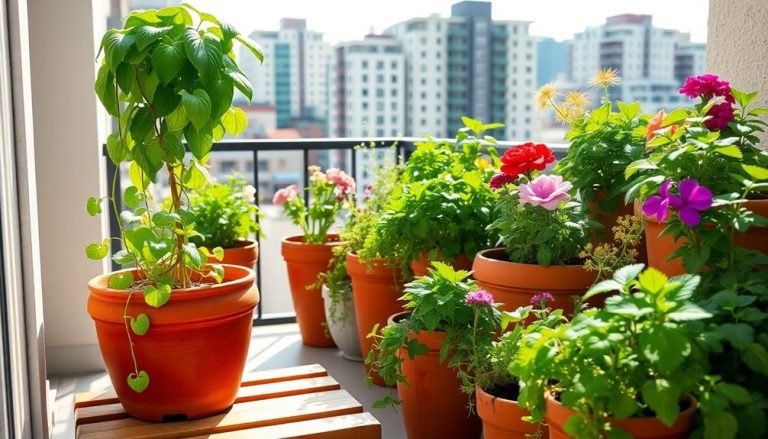To keep your garden healthy each month, start by assessing plant health regularly—check for discoloration or wilting leaves. Prune and trim as needed to remove any dead or diseased branches. Don't forget to fertilize during the growing season, testing your soil first to choose the right type. Monitor irrigation based on weather conditions to ensure your plants thrive without overwatering. Finally, stay on top of weeds and pests by applying mulch and using natural pesticides. These simple steps will help maintain a vibrant garden, and you might find even more useful tips to enhance your gardening skills.
Key Takeaways
- Regularly assess plant health by inspecting leaves, stems, and roots for signs of pests, diseases, or nutrient deficiencies.
- Prune and trim plants to remove dead or damaged branches, promoting healthier growth and improved appearance.
- Fertilize during the growing season based on soil tests to ensure optimal nutrient levels for your plants.
- Monitor irrigation needs weekly, adjusting watering based on weather conditions and specific plant requirements.
- Control weeds and pests through regular inspections, applying mulch, and using natural pesticides or companion planting techniques.
Assess Plant Health Regularly
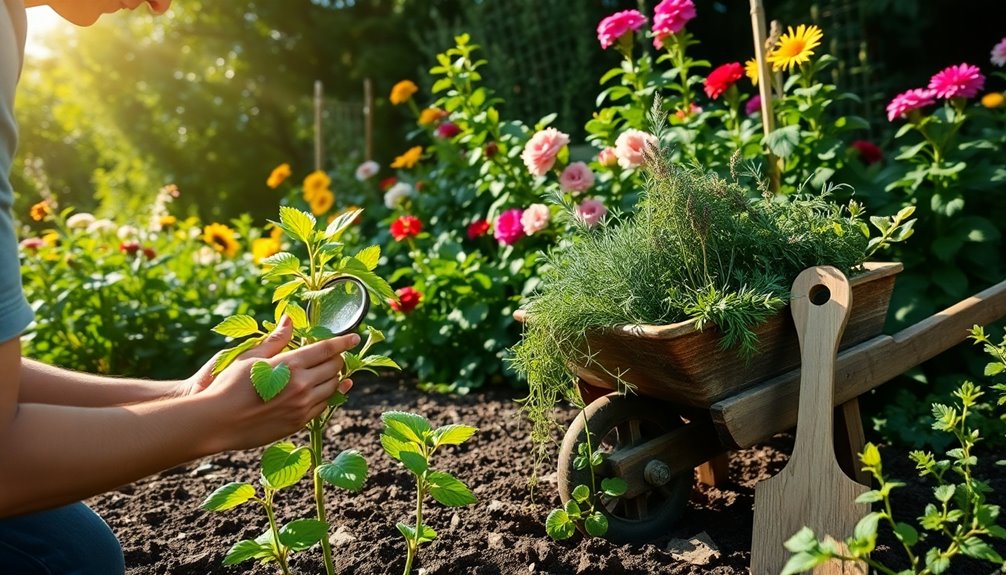
Regularly assessing your plants' health is crucial for a thriving garden. By keeping a close eye on your greenery, you can catch potential issues before they escalate.
Start by examining the leaves; look for discoloration, spots, or wilting. These signs might indicate pests, diseases, or nutrient deficiencies. Don't forget to check the stems and roots, too. If you notice any soft or mushy spots, it could signal root rot. Utilizing essential gardening tools can help you inspect your plants more effectively.
Next, consider your plants' growth patterns. Are they growing as expected, or are they stagnant? Healthy plants should show consistent growth during their active seasons. If you spot stunted growth, it's time to investigate the soil quality, light conditions, and watering schedule.
Pay attention to any changes in your plants' environment as well. Seasonal shifts can impact their health, so adjust your care routine accordingly. For instance, you might need to increase watering during hot months or provide shade when temperatures soar.
Lastly, keep a garden journal to track your observations. Documenting your findings will help you identify trends and improve your gardening practices over time. Using essential journals can further enhance your gardening experience by providing structured ways to record and reflect on your plant care.
Regular assessments create a solid foundation for a flourishing garden.
Prune and Trim Strategically
Pruning and trimming are essential practices that keep your garden healthy and vibrant. By removing dead or overgrown branches, you allow your plants to focus their energy on new growth. Additionally, using the right tools, such as a high-quality garden trowel, can make the process smoother and more effective.
Start by assessing which plants need attention. Look for any dead, damaged, or diseased branches and trim them away. This not only improves the plant's appearance but also helps prevent the spread of disease.
Timing is crucial. For most flowering shrubs, late winter or early spring is the best time to prune. This encourages new blooms and healthy growth. Avoid heavy pruning during the growing season, as it can stress the plant. Instead, opt for light trimming to maintain shape and size.
Use clean, sharp tools to make precise cuts. This minimizes damage to the plant and promotes healing. When pruning, aim for a natural shape that allows light and air to penetrate the foliage. Additionally, investing in essential pruning shears can greatly enhance your efficiency and effectiveness in the garden.
Remember to step back and view the plant from different angles to ensure a balanced look.
Regularly pruning and trimming won't only enhance your garden's aesthetic but also foster a thriving environment for your plants to flourish. So, grab those shears and get to work!
Fertilize for Optimal Growth
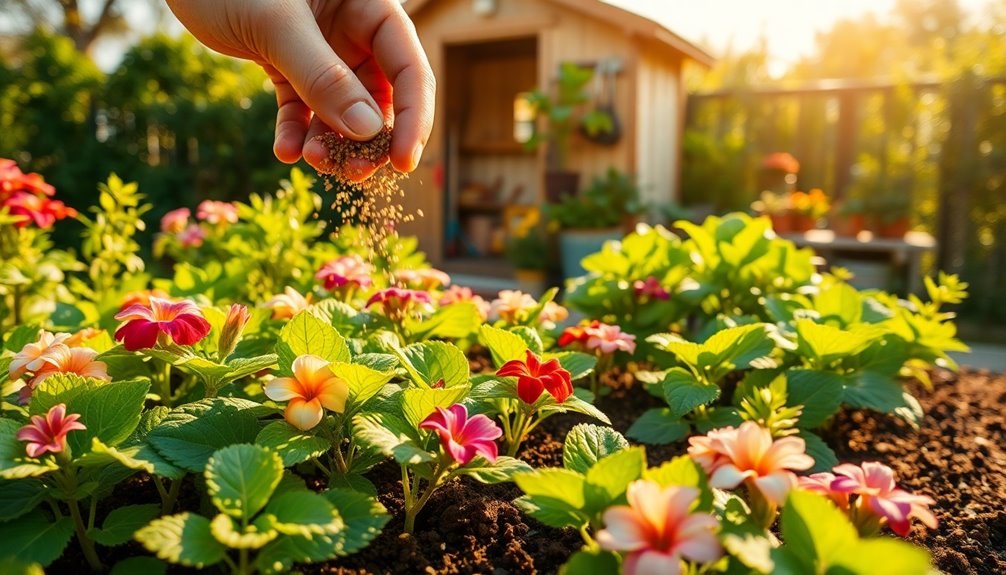
Fertilizing your garden is essential for promoting optimal growth and vibrant blooms. The right nutrients will help your plants thrive, so it's crucial to apply fertilizers at the appropriate time and in the right amounts.
Here are some tips to keep in mind when fertilizing:
- Understand your soil: Test your soil to determine its nutrient levels and pH. This will guide you in choosing the right fertilizer.
- Choose the right type: Opt for slow-release fertilizers for long-lasting nutrition or liquid fertilizers for a quick boost. Using fertilizer tablets can simplify this process.
- Follow application rates: Over-fertilizing can harm your plants. Always follow the recommended rates on the fertilizer package.
- Timing is key: Fertilize during the growing season, typically in spring and summer, when plants need nutrients the most.
- Observe plant response: Monitor your plants' growth and adjust your fertilization schedule based on their appearance and health.
Monitor Irrigation Needs
Monitoring irrigation needs is crucial for maintaining a healthy garden. Your plants depend on the right amount of water to thrive, and understanding their specific requirements can make all the difference.
Start by assessing the weather conditions each week. If it's been particularly hot or dry, your garden might need more water than usual.
Check the soil moisture regularly. Stick your finger about an inch into the soil; if it feels dry, it's time to water. Different plants have varying needs, so make sure you're aware of what each type in your garden requires. For instance, succulents need less water, while vegetables often need more.
Consider installing a rain gauge to help you track rainfall, and adjust your irrigation schedule accordingly. If you have an automatic irrigation system, regularly inspect it for any leaks or malfunctions. You don't want to waste water or leave your plants thirsty.
Lastly, remember that deep watering encourages stronger root growth. Water thoroughly but less frequently to promote healthy plants.
Control Weeds and Pests
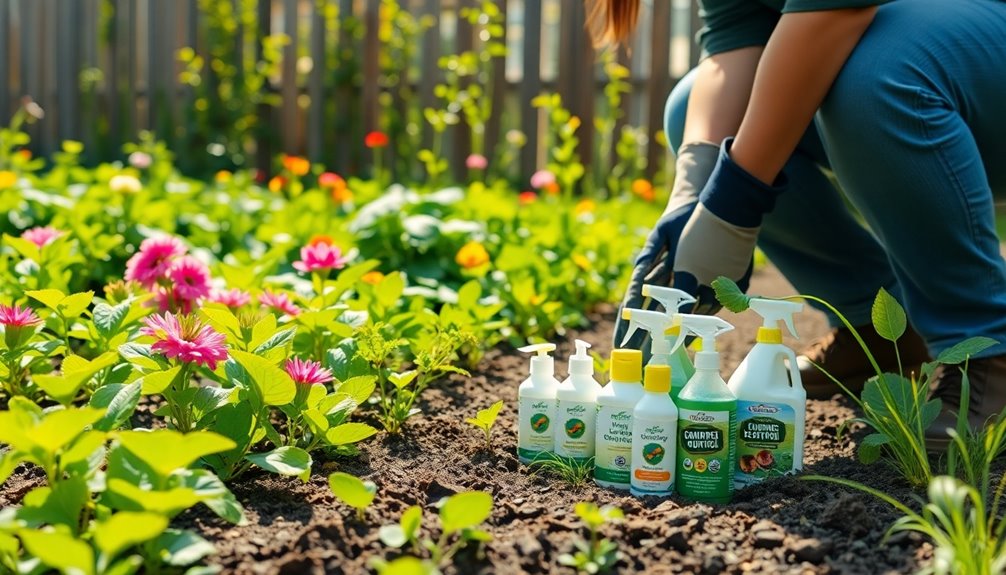
While you focus on nurturing your plants, keeping weeds and pests at bay is equally important for a thriving garden. Ignoring these nuisances can lead to stunted growth and diminished harvests.
To ensure your garden remains healthy, you'll need to be proactive.
Start by regularly inspecting your garden for any signs of weeds or pests. Here are some strategies to help you control them effectively:
- Mulch: Apply a thick layer of mulch around your plants to suppress weed growth and retain moisture.
- Hand-pulling: For small infestations, simply hand-pulling weeds is often the most effective method.
- Natural pesticides: Use organic solutions like neem oil or insecticidal soap to keep harmful insects away.
- Companion planting: Introduce plants that naturally repel pests, such as marigolds, to protect your more vulnerable plants.
- Regular maintenance: Keep your garden tidy by removing debris and dead plants that can harbor pests.
Frequently Asked Questions
When Is the Best Time to Start a Garden?
The best time to start a garden depends on your climate. Generally, early spring is ideal for most areas. You'll want to ensure the soil's warm enough for seeds to germinate and thrive.
How Do I Choose the Right Soil for My Plants?
How do you ensure your plants thrive? Start by assessing your plants' needs; choose soil that offers good drainage, nutrients, and pH balance. Don't forget to consider whether you're planting indoors or outdoors!
What Tools Do I Need for Basic Garden Upkeep?
For basic garden upkeep, you'll need essential tools like a trowel, pruning shears, a hoe, a rake, and gloves. These will help you maintain your plants and keep your garden tidy and thriving.
Can I Grow Vegetables in Pots?
Growing vegetables in pots is like nurturing a mini garden on your balcony. You can absolutely do it! Just choose the right containers, ensure proper drainage, and select suitable plants for your space and sunlight.
How Often Should I Rotate My Crops?
You should rotate your crops every season to maintain soil health and prevent pests. By changing the location of your plants, you'll promote nutrient balance, enhance growth, and reduce the risk of disease in your garden.
Conclusion
By following these monthly garden upkeep tips, you'll keep your garden thriving like a well-tuned orchestra. Regular assessments, strategic pruning, and proper fertilization will ensure your plants flourish, while monitoring irrigation and managing weeds and pests will maintain harmony in your green space. Remember, a little consistent care goes a long way in nurturing your garden's health. So, roll up your sleeves and enjoy the rewarding process of cultivating your beautiful outdoor sanctuary!


